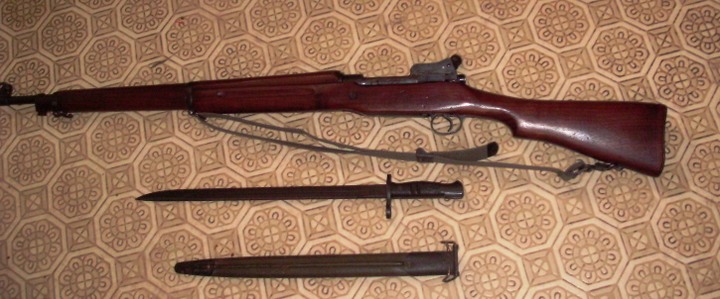Hi,
I recently acquired an old hunting rifle from my grandfather. He used it for hunting in the 1940's when he lived in Canada.
The top reads "U.S. Model of 1917 Eddystone 221108" The left top of the barrel has a "Z", a "B" and an eagle head with "K4" under it. The middle has a flaming wheel symbol and the right side has a symbol that looks like a jellyfish, along with an eagle head with "K3" under it.
Their are bell shaped markings near the bolt, trigger lock and on the left of the bolt. The have the numbers 278, 258 and 269 under them respectively. The end of the barrel has the letter "E" with the flaming wheel symbol underneath and the numbers "12 17" underneath the symbol.
The sight on the end has the ".075" stamped on the top and "6492" on the bottom.
I don't know anything about gun markings so any insight is helpful. I would especially like to know what year this rifle was made. Also, who is Eddystone? I understand this rifle is a copy of a British design. Did Eddystone just manufacture this weapon, or did they do some engineering too?
Thanks in advance, I appreciate the expertise on this board.
Tom M.
I recently acquired an old hunting rifle from my grandfather. He used it for hunting in the 1940's when he lived in Canada.
The top reads "U.S. Model of 1917 Eddystone 221108" The left top of the barrel has a "Z", a "B" and an eagle head with "K4" under it. The middle has a flaming wheel symbol and the right side has a symbol that looks like a jellyfish, along with an eagle head with "K3" under it.
Their are bell shaped markings near the bolt, trigger lock and on the left of the bolt. The have the numbers 278, 258 and 269 under them respectively. The end of the barrel has the letter "E" with the flaming wheel symbol underneath and the numbers "12 17" underneath the symbol.
The sight on the end has the ".075" stamped on the top and "6492" on the bottom.
I don't know anything about gun markings so any insight is helpful. I would especially like to know what year this rifle was made. Also, who is Eddystone? I understand this rifle is a copy of a British design. Did Eddystone just manufacture this weapon, or did they do some engineering too?
Thanks in advance, I appreciate the expertise on this board.
Tom M.

